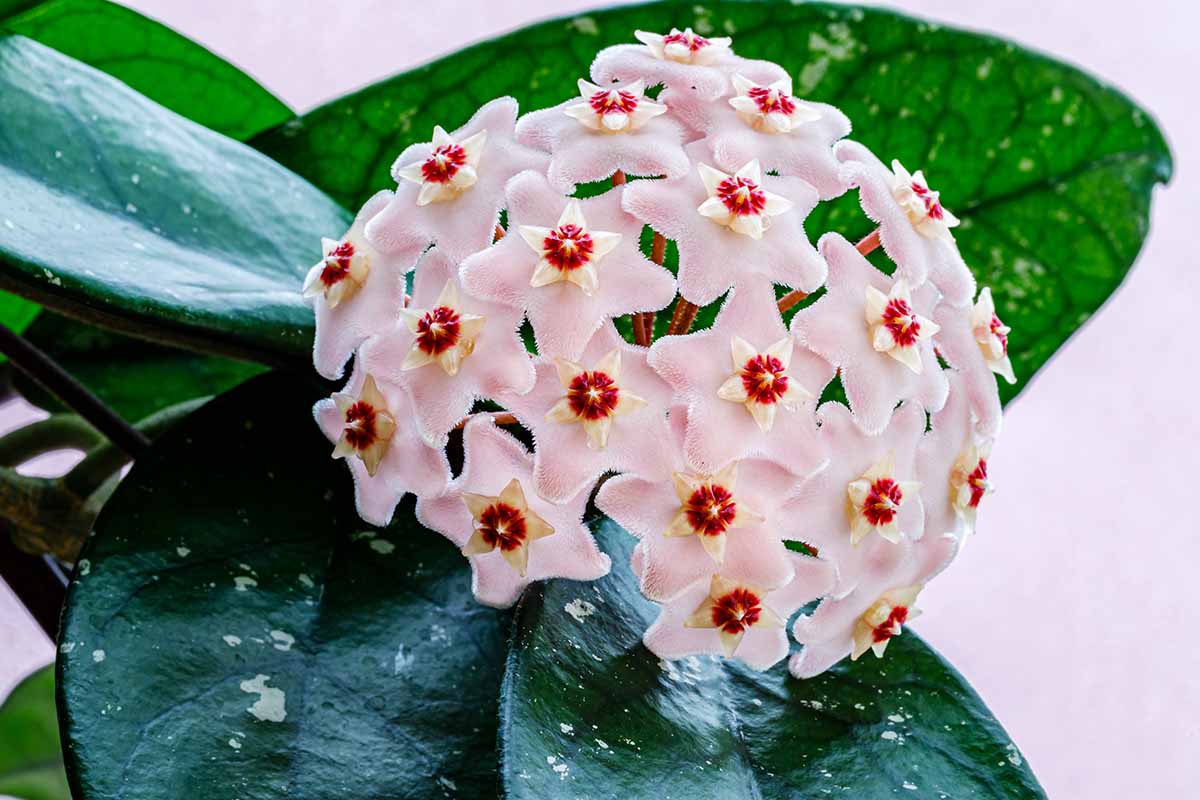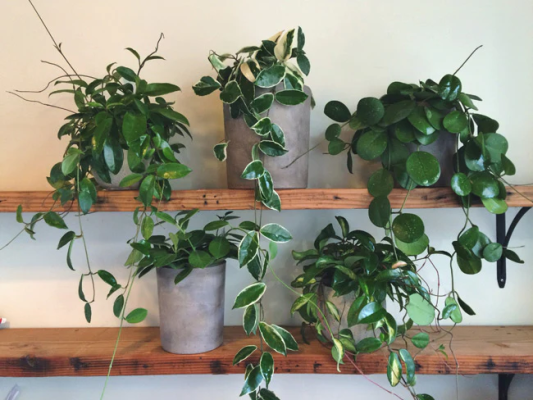Plant Care
Hoya Plant Care
Also known as Wax Leaf Plants due to their thick, waxy leaves. Hoya are beautiful trailing plants with the low maintenance care of a succulents!
Light – Bright, indirect light. Direct afternoon light can lead to leaf scorching. Tolerant of moderate and low light, but will not bloom.
Water – Allow to dry out completely before thoroughly saturating the soil with water. Do not allow to sit in water. Decrease watering frequency in winter while Hoya is dormant.
Soil – A quick drying soil, like Espoma African Violet Soil or Espoma Cactus Soil, are great choices that help prevent overwatering.
Temperature – A tropical plant by nature, Hoya prefers temperatures between 65° and 85°. Hoya do not tolerate temperatures below 50°.
Humidity – While average home humidity is fine, Hoya will greatly enjoy higher levels. Frequent misting, a nearby humidifier or a tray of pebbles and water are all great methods to increase humidity. Alternatively, if your bathroom receives enough light, it’s a great location.
Fertilization – Feed during spring, summer and early fall with a balanced fertilizer, like Bonide Liquid Plant Food according to the label’s instructions. There is no need to fertilize during winter.
Size – As a trailing plant, Hoya are only a few inches tall, but their tendrils average 12-16” long and especially happy plants can get as long as 20”!
Repotting – Hoya are one of the rare plants that prefer to be pot-bound (they actually won’t bloom if they’re not pot-bound) and shouldn’t be repotted too frequently. When the time comes for repotting, Hoya should only be planted in a container 1-2 inches larger than its current container.
Propagation – Easily propagated via cuttings.
Toxicity – Considered non-toxic to people and pets.
Special notes – Hoya grow tendril first, meaning that their stem grows and leaves emerge later, so there’s no need for alarm.
Hoya blooms do not require deadheading. In fact, removing spent flowers may result in decreased flowering.



